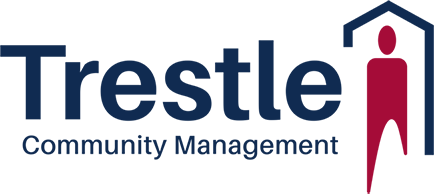The ABCs of HOAs: Common Abbreviations Explained
Living in a Community Association community can come with its own set of acronyms and abbreviations. Understanding these terms can help new and existing Homeowners alike. Here are some of the most common abbreviations and what they mean:
Community Association Terms
Community Associations are known by several different names and acronyms. All Association consist of a group of Owners who join together to manage common areas and maintain the overall appearance of the community.
- Homeowners Association (HOA): Often a community subject to a Homeowners Association Act but is commonly used to describe a community with detached, single-family homes.
- Condominium Owners Association (COA): May also be referred to as a Condo or Condominium and typically describes a community subject to a Condominium Association Act. COA is often used to describe a community with attached units.
- Community Association, Association and Common Interest Community: General terms used to describe a community in which a group of Owners share the cost of maintaining common spaces.
- Common elements or areas: An item or area accessible to most, if not all, Homeowners within the community. This may include items like roads, play structures, roofs, mailbox kiosks, pools, or clubhouses.
- Limited common elements or areas: An item or area designated to be used by one or more unit or lot but not accessible to all Homeowners. This may include items like plumbing lines or exterior windows and doors.
- Unit or Lot: An area designated for the sole use of the Owner. The boundaries of the unit or lot are typically defined in the Declaration and vary among communities. Some encompass the entire home, including exterior siding and roofs, while others may end at interior drywall. The term “lot” is most frequently used to describe the spaces within a detached, single-family home community and “unit” is used to describe spaces within an attached community, like a condominium.
Association Management
Associations are often run by a Board of Directors and may utilize volunteer committees as well. These committees vary by community but can be designed to focus on things such as landscaping, community events, large projects, and more.
- Board of Directors (BOD): Also known as the Board or Directors. The Board is the governing body of the Association, made up of elected members who manage the community and make important decisions. Members are often unpaid Homeowner volunteers.
- Architectural Control Committee (ACC): The ACC may also be known as the ARC (Architectural Review Committee), ARB (Architectural Review Board) or PIC (Property Improvement Committee). The committee can be comprised of Board Members or other volunteers and is tasked with reviewing proposed changes to the homes within the community, and ensuring they comply with the governing documents.
- Community Association Manager (CAM): Many Associations retain professional community association management to provide advise and guidance to the Board. Managers may have a variety of titles including Association Manager, Community Manager, Senior Manager, Advisory Manager and more.
Management Credentials and Trestle’s Role in Community Association Management

Trestle is a professional management firm, specializing in Community Association Management. Trestle Community Management is often hired by Boards of Directors to provide advisory services and oversee the day-to-day operations of the Association. However, Trestle may be hired solely to provide bookkeeping services for a community. Trestle’s Team and its Managers hold one of the highest numbers of prestigious credentials within the industry and are trained to understand the laws which apply to it Client Associations, and to guide the Board of Directors in making sound decisions which, in turn, protect the property values in the community.
- Certified Manager of Community Associations (CMCA): The CMCA designation is awarded by the Community Associations Managers International Certification Board (CAMICB) to Community Association Managers who have demonstrated a comprehensive understanding of community association management through education, experience, and testing. The CMCA designation indicates that the manager has a broad understanding of the legal, financial, and operational aspects of community association management and has the knowledge and skills necessary to effectively manage a community association.
- Association Management Specialist (AMS): The AMS designation is awarded by the Community Associations Institute (CAI) to community association managers who hold a CMCA certificate and have demonstrated a high level of expertise in the management of community associations. The AMS designation requires the completion of a rigorous educational program and a commitment to ongoing professional development. The AMS designation is considered a benchmark of excellence in the community association management industry and is recognized by both community association boards and industry professionals.
- Professional Community Association Manager (PCAM): A PCAM is a professional designation earned by community association managers who have met certain educational, experience, and ethical requirements set by CAI. PCAM designees must first obtain their CMCA and AMS credentials and are considered experts in community association management and are recognized as having the highest level of professionalism in the industry.
- Large-Scale Manager (LSM): The LSM designation is awarded by CAI to PCAM holders who have managed large-scale community associations for a minimum of five years. The LSM designation indicates that the manager has a thorough understanding of all operational aspects associated with large-scale community association management.
Community Association Acts
In Washington State, Community Associations are corporations and often subject to the Washington State Nonprofit Corporation Act (Nonprofit Act). In addition, Associations are incorporated under one of four common interest ownership acts. The applicability of each depends on the date and way in which the Association was incorporated. A community may be incorporated under any act, regardless of its structure. For example, a traditional condominium-style attached community may be legally consider an HOA if incorporated under the HOA Act.
- The Homeowners Association Act (HOA Act),
- The Horizontal Properties Regimes Act (Old Act),
- The Condominium Act (New Act), and
- The Washington Uniform Common Interest Ownership Act (WUCIOA).
Governing Documents
Each common interest ownership act in Washington State outlines different responsibilities and protections for the Association and Homeowners. A community’s Articles of Incorporation and Bylaws typically include details outlining to which act an Association is subject. Once an Association has been incorporated, responsibility is better defined, which allows the community to prepare its other governing documents. An established Association may have many community-specific governing documents, but each community starts with same core documents:
- Articles of Incorporation: Typically document the legal creation of the Association as a corporation,
- Bylaws: Often establish the rules which define the innerworkings of the Association, such as Board of Director eligibility, positions, terms, and election processes, and
- Declaration: Also known as the Covenants, Conditions and Restrictions (CC&Rs), the Declaration usually define maintenance responsibility, and outline which elements belong to the Homeowners, and which belong to the Association.
- Rules and Regulations: They may also be referred to as the “Rules”. They are used to further define obligations and expectations within the community.
Community Association Finances
- Assessment: Commonly referred to as “dues,” assessments are the fees paid by Homeowners to cover the cost of maintaining common areas and community amenities.
- Special Assessment: Assessment on top of regular charges to cover additional expense such as unbudgeted maintenance.
- Fines: Monetary penalties imposed by the Association for violating the governing documents.
- Financials: the Association’s monthly financial report outlining its income and expenses.
- Audit: an annual review of the Association financial transactions by a Certified Public Accountant (CPA).
Learn More
Understanding the acronyms and abbreviations commonly used in Community Associations can help Homeowners navigate the experience more easily. Interested Homeowners can learn more about their Community Association and its Board by visiting Trestle’s My-Community Web Portal, contacting the Community’s Association Manager and attending Board and community meetings.
Connecting with Trestle
Trestle regularly connects on LinkedIn, Facebook, and Twitter, and can be contacted through its website or at (425) 454-6404.



